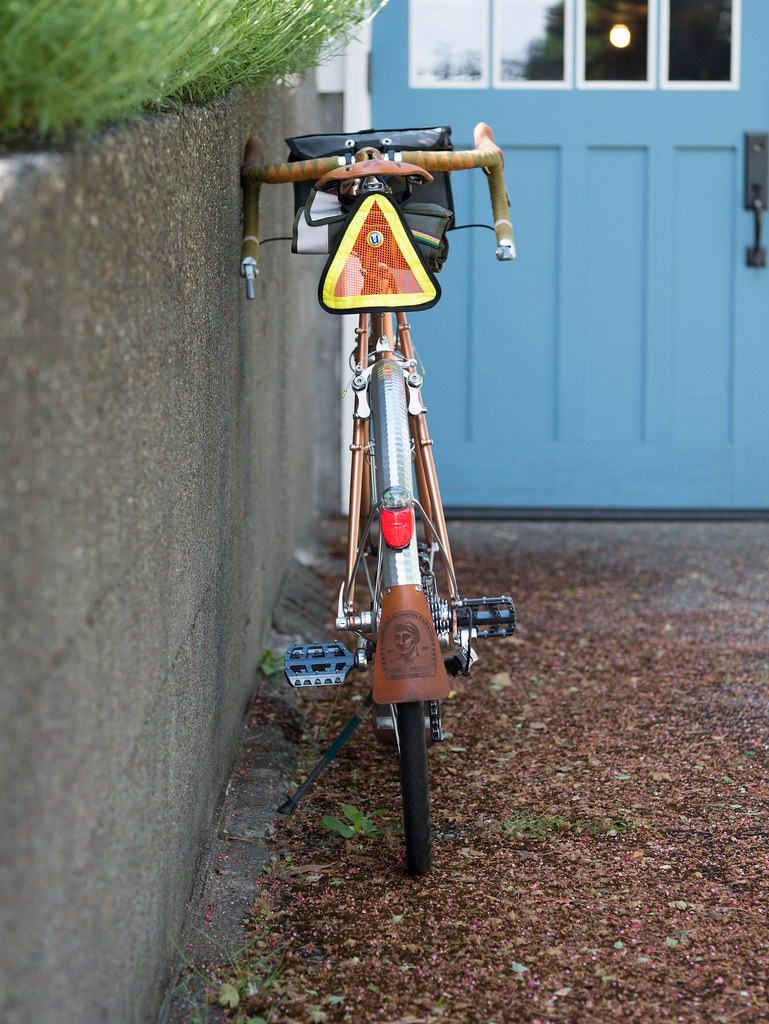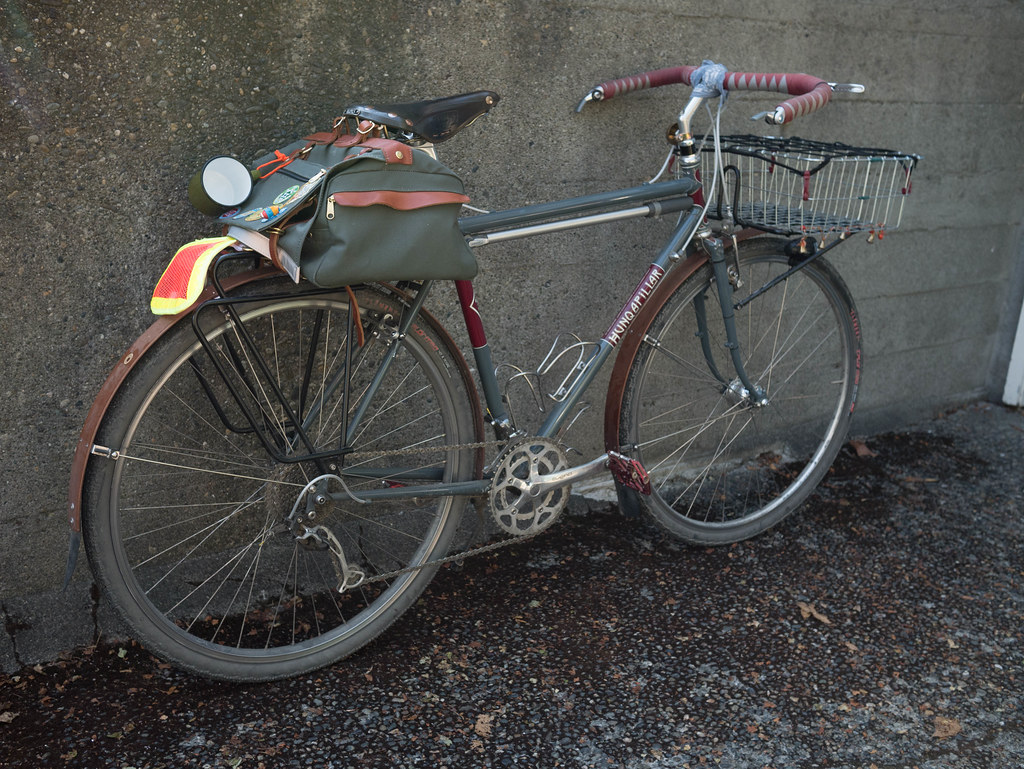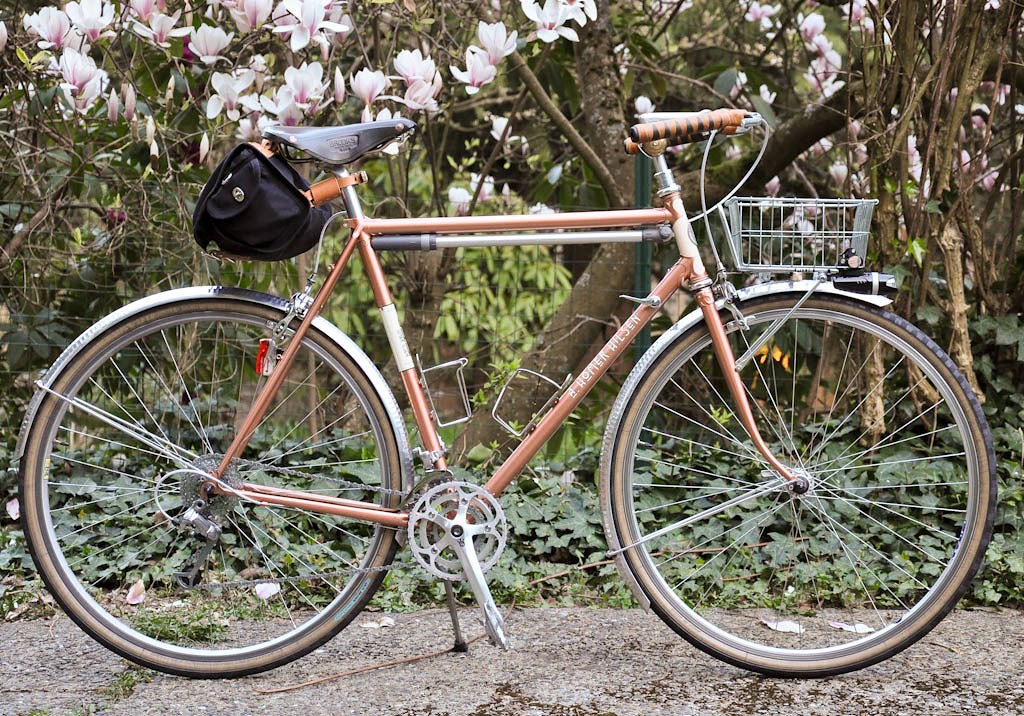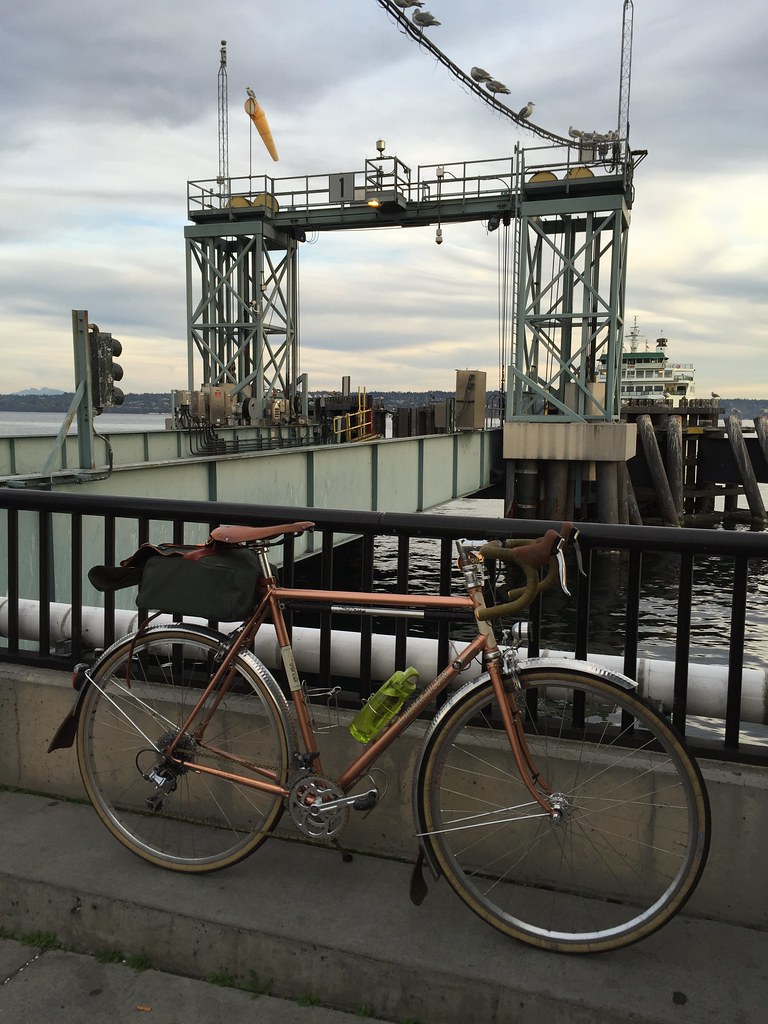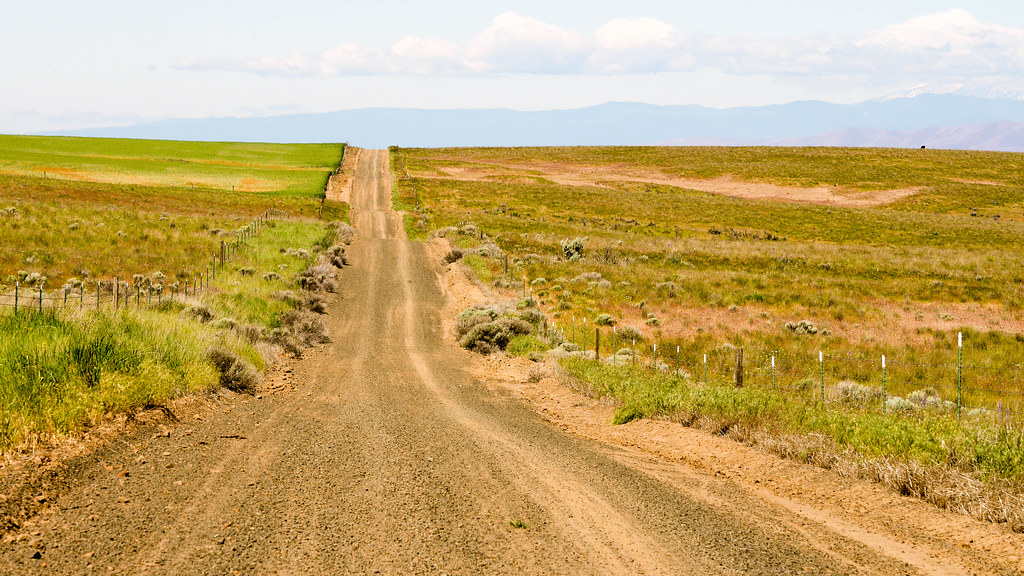I want to go into a bit more detail on what I’ve found in experimenting with a more traditional low-trail bike like the Vélo Routier, and compare it to the mid trail Rivendell A. Homer Hilsen from my last post. I have these bikes set up nearly the same. Both use 42cm Noodles, Compass cranks, and VP pedals (not shown), and Selle Anatomica Titanico saddles.


As the side view shows, the main difference is the fork rake and head tube and seat tube angles giving the bikes a slightly different geometry. The Toussaint has slightly steeper angles, and more rake giving it trail around 30mm, whereas the Hilsen is more relaxed with trail around 55-60mm. Yes, the Vélo is 650b and the Hilsen is 700c, but both bikes use light, supple Compass tires (tubeless even). The tire volume has a definite impact on the ride, but it doesn’t really relate to how the trail aspect affects the feel of the bike, at least not in the detail I’ll get into here.
Steering Curves
You can definitely tell the difference in the feel that the geometry creates when doing tight turns on the bike.
I’ll start with a spot in my commute that “pushes” technique a bit. There is a railroad crossing on my daily ride where I perform a fairly tight “S” turn that has fences on either side to keep me honest. The Hilsen requires more thought and body lean. The Vélo Routier requires less body, and steers the curves easier. This is the case no matter the load on the bikes for the most part.
On the other hand, when I put the Hilsen into a curve, it tracks it. When I put the Vélo Routier in, it will still respond to inputs. This can be good or bad. I would say that on the Routier, I have to stay on top of steering all the time, whereas on the Hilsen, I have to be a little more planned up front, but when committed, it requires less concentration from me.
Front Weighted Loads
The Routier is much less concerned if there is weight in the front. The bike doesn’t wag from side to side (wheel flop) when there is significant load, and when I park it with the front bag, it doesn’t sway over to the side. The times I’ve actually found this to be nice is when I’m parking the bike, and when I’m carrying a 10+ pound load (which is actually very rare for me).
My typical rando load is probably at most 5 pounds in my front bag with a layer, extra gloves, and food. This is easily handled with little problem on the Hilsen when similarly front bag equipped.
Tracking
The Hilsen always wants to go straight at speed – there is more gyro stabilization effect with this geometry. This helps when you want to be minimal in steering input. Examples: curves, laziness, riding no-handed. The Routier goes where your hands move it to. This isn’t great if you are tired or distracted. I’ve had a few more close calls on the Routier nearly going on a temporary off-road excursion. This has been at normal riding pace: 12-17 mph. I really noticed this “ultra responsive” steering at the end of a 300k when I was tired, and couldn’t seem to keep the bike going in a straight line without undue effort. I remember thinking to myself that the low trail was supposed to be “easier”, but in this case, under fatigue, it was actually the opposite. This is also a complaint generally fielded against higher trail bikes – that they tend to wander when climbing at slow speeds.
I’ve heard that wind gusts can really upset a higher trail bike, but I haven’t experienced that yet. Gusts tend to bother me on either bike, but not uncontrollably so.
UPDATE: a comment left by a reader asked about high speed descent handling between the bikes. I have noticed very little differences here – when moving at speeds over 20mph, both bikes feel stable.
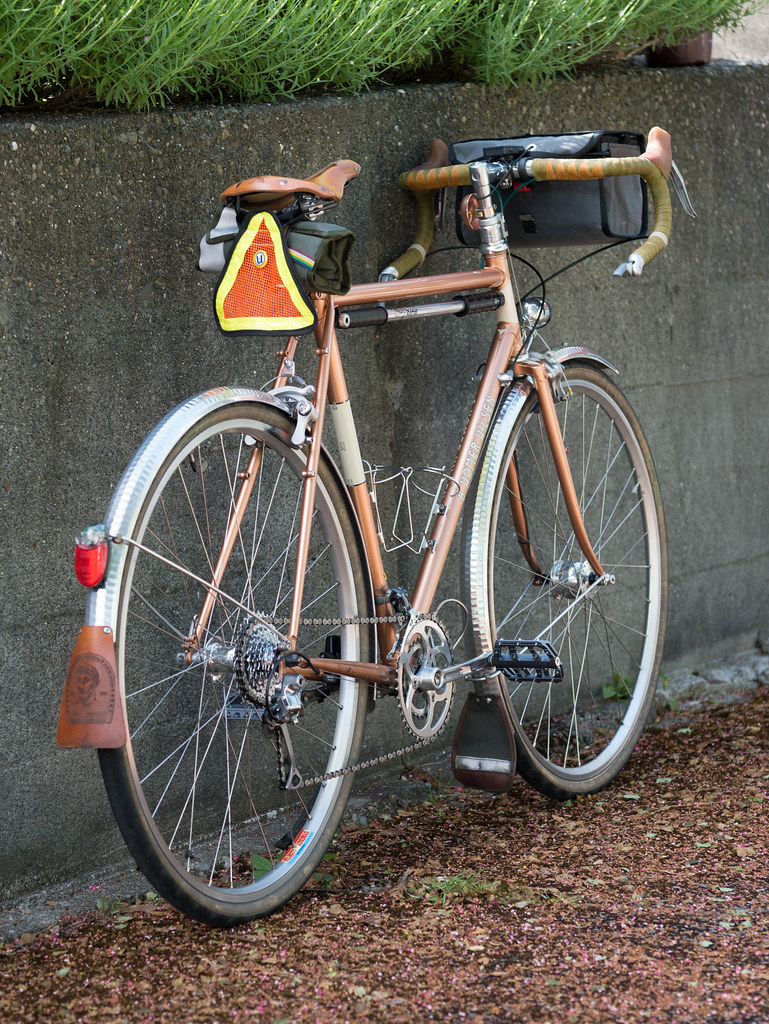

Commuting
I find no real difference other than the amount of weight you want to carry. And, this only matters if you really want to carry a lot of weight in the front. I tend to hate on rear rack and pannier combos as I don’t like the tail wagging the bike feel, and the dirt on the panniers from road spray. Front bags are awesome for keeping your stuff accessible and clean. I don’t typically carry a lot of weight on my commute. I keep heavy clothes in the office, and only occasionally bring an iPad or MacBook on the commute. I will sometimes pick up beer, or other heavy items on the ride home, however, but either bike manages this for a few miles with no real problems.
Balance/CoG
Now here is something I’ve noticed more as I ride the Toussaint, and this is more obvious when I try to ride no-handed. I feel like my center of gravity is higher on the low-trail bike. It sort of feels like I’m sitting up higher and closer to the bars – more of an “on top” feeling rather than an “in the bike” feeling. I would just attribute this to the sharper seat tube angle – not even something that necessarily contributes to the trail number, but is part of the geometry difference.
Summary
Different trails for different folks with different needs. If you are a long-distance or endurance rider who carries a good load, is alert even after hours in the saddle (think 12+ hours), and you like to have a very precise feel for control on steering movements – go with a low trail ride. If you are regularly carrying large loads, and want them to stay clean and dry, go low trail. If you don’t mind carrying load in the back – it doesn’t really matter then.
If you like to ride long distances but want to be able to do lots of restful no-handed riding, and you like to zone out a bit more – go with a mid-trail bike. If you are a commuter and want a bike that doesn’t flop over and pull the bike down when you have stuff in the front basket/bag, get a low trail bike.
If you like to ride big tires with fenders, or have bigger feet, and hate toe-overlap, you may find you will have less on a low-trail bike as the fork is raked out more. Another consideration.
I find both of these bikes to be great brevet bikes. They are also great commuters. I would give the nod slightly to my Hilsen based on my riding style, preferences, and loaded weight characteristics. Someday, I’ll have to “pull a Chen” and “get another Hilsen” that is modified to low trail and then do a test, but that sounds like a lot of work. I’m moving out of my tweaking phase. My real recommendation is to get two bikes, one low and one mid/high, and find out what you prefer. Nobody can really just tell you – it helps to experience it yourself.
